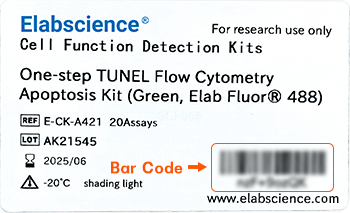IFNAR1 Polyclonal Antibody (D-AB-10206L)

For research use only.
| Verified Samples |
Verified Samples in WB: Mouse brain, Rat brain |
| Dilution | WB 1:500-1:1000 |
| Isotype | IgG |
| Host | Rabbit |
| Reactivity | Mouse, Rat |
| Applications | WB |
| Clonality | Polyclonal |
| Immunogen | Recombinant Mouse Ifnar1 protein expressed by E.coli |
| Abbre | IFNAR1 |
| Synonyms | AVP, Alpha type antiviral protein, Antiviral protein, Beta type antiviral protein, CRF2-1, Cytokine receptor class-II member 1, Cytokine receptor family 2 member 1, IFN alpha REC, IFN alpha receptor, IFN alpha/beta Receptor a, alpha-type, beta-type |
| Swissprot | |
| Calculated MW | 66 kDa |
| Observed MW |
110-130 kDa
The actual band is not consistent with the expectation.
Western blotting is a method for detecting a certain protein in a complex sample based on the specific binding of antigen and antibody. Different proteins can be divided into bands based on different mobility rates. The mobility is affected by many factors, which may cause the observed band size to be inconsistent with the expected size. The common factors include: 1. Post-translational modifications: For example, modifications such as glycosylation, phosphorylation, methylation, and acetylation will increase the molecular weight of the protein. 2. Splicing variants: Different expression patterns of various mRNA splicing bodies may produce proteins of different sizes. 3. Post-translational cleavage: Many proteins are first synthesized into precursor proteins and then cleaved to form active forms, such as COL1A1. 4. Relative charge: the composition of amino acids (the proportion of charged amino acids and uncharged amino acids). 5. Formation of multimers: For example, in protein dimer, strong interactions between proteins can cause the bands to be larger. However, the use of reducing conditions can usually avoid the formation of multimers. If a protein in a sample has different modified forms at the same time, multiple bands may be detected on the membrane. |
| Concentration | 1 mg/mL |
| Buffer | PBS with 0.05% Proclin300, 1% protective protein and 50% glycerol, pH7.4 |
| Purification Method | Antigen Affinity Purification |
| Research Areas | Cancer, Epigenetics and Nuclear Signaling, Immunology, Signal Transduction |
| Conjugation | Unconjugated |
| Storage | Store at -20°C Valid for 12 months. Avoid freeze / thaw cycles. |
| Shipping | The product is shipped with ice pack,upon receipt,store it immediately at the temperature recommended. |
| background | IFNAR1 (Interferon Alpha And Beta Receptor Subunit 1) is a Protein Coding gene. Diseases associated with IFNAR1 include Septicemic Plague and Hepatitis C. Among its related pathways are Type I Interferon Signaling Pathways and Immune response IFN alpha/beta signaling pathway. GO annotations related to this gene include interferon receptor activity and type I interferon receptor activity. An important paralog of this gene is ENSG00000249624.The protein encoded by this gene is a type I membrane protein that forms one of the two chains of a receptor for interferons alpha and beta. Binding and activation of the receptor stimulates Janus protein kinases, which in turn phosphorylate several proteins, including STAT1 and STAT2. The encoded protein also functions as an antiviral factor. |
Other Clones
{{antibodyDetailsPage.numTotal}} Results
-
{{item.title}}
Citations ({{item.publications_count}}) Manual MSDS
Cat.No.:{{item.cat}}
{{index}} {{goods_show_value}}
Other Formats
{{formatDetailsPage.numTotal}} Results
Unconjugated
-
{{item.title}}
Citations ({{item.publications_count}}) Manual MSDS
Cat.No.:{{item.cat}}
{{index}} {{goods_show_value}}
-
IF:{{item.impact}}
Journal:{{item.journal}} ({{item.year}})
DOI:{{item.doi}}Reactivity:{{item.species}}
Sample Type:{{item.sample_type}}
-
Q{{(FAQpage.currentPage - 1)*pageSize+index+1}}:{{item.name}}





